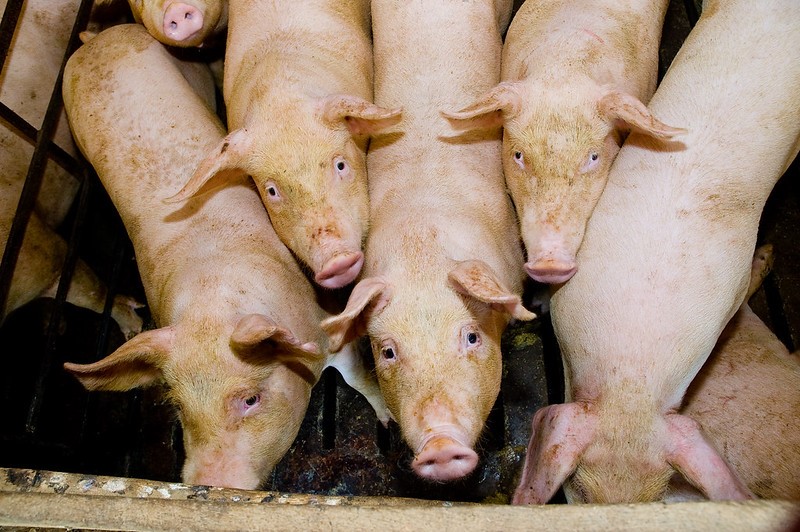A study published this week in The Lancet Microbe shows that, despite global concerns about resistance, the last-resort antibiotic colistin is still being traded and widely used for growth promotion and disease prevention in food-producing animals in some low- and middle-income countries (LMICs).
Furthermore, the study found that in one country—Pakistan—use of colistin in poultry production appears to be linked to the emergence of the colistin resistance gene MCR-1 in animals, humans, and the environment.
The authors of the study say the findings highlight the need for more regulation of antibiotic use in food-producing animals, alongside better education and cost-effective alternatives that can ensure that farmers in low-resource countries can meet the growing demand for meat.
Overuse of a last-resort antibiotic
In the multifaceted study, a team led by researchers with Pakistan's Faisalabad University of Agriculture and the University of Oxford used online databases and government sources to analyze data on colistin importation, manufacturing, and usage in Pakistan from 2017 through 2020.
With intensive livestock farming on the rise, the authors note, Pakistan has become a notable consumer of antimicrobials for use in food animals, particularly poultry, and colistin—considered a critically important antibiotic by the World Health Organization (WHO)—is among the antibiotics that are widely used.
Concern about widespread colistin use in food-animal production emerged in 2015 after Chinese scientists discovered the MCR-1 gene in Escherichia coli samples from pigs, pork products, and hospital patients. E coli and other bacteria that carry the mobile resistance gene are not only resistant to colistin, which is a last-resort drug for multidrug-resistant infections, but typically carry other resistance mechanisms, making them almost impossible to treat. The gene, and several offshoots, have since spread around the world.

The discovery of MCR-1, and the link to the use of colistin for disease prevention and growth promotion in food-animals, led the Chinese government to ban the drug's use in agriculture in 2017. But it continues to manufacture and export colistin as either pharmaceutical raw material (PRM) or feed additive, and other countries continue to use it in agriculture. Of the 4,292 tonnes (4,731 US tons) of colistin produced globally in 2019, 96% was used in poultry and pig farming, according to the study.
The researchers found that Pakistan was a significant consumer of the drug, importing 275.5 tonnes (303.7 US tons) of colistin as PRM from China, 701.9 tonnes (773.7 US tons) as feed additive from China and Vietnam, and 63 tonnes (69.4 US tons) as finished pharmaceutical products (FPPs) from Europe and Asia. Anecdotal data from Bangladesh and Nigeria showed those countries also imported colistin for use in livestock during this period, despite both countries banning agricultural use of the drug.
An analysis of global import and export data, meanwhile, showed that, from 2018 to 2021, China exported 2,664 tonnes (2,397 US tons) of colistin to 21 countries, with Vietnam, Pakistan, Russia, and India among the primary importers of the drug as PRM and feed additive. Vietnam was also a significant exporter of colistin for use in agriculture.
The authors say the widespread export and import of colistin as a feed additive and growth promoter is worrying.
"In the current climate of One Health antimicrobial resistance awareness, it is counterintuitive that, in 2022, colistin, an antibiotic that is listed as a WHO Critically Important Antimicrobial for Human Medicine, is still sold and disseminated as an antimicrobial growth promoter," they wrote.
In addition, in interviews with 18 farmers in Pakistan and 3 in Nigeria, the researchers found the Pakistani farmers were completely unaware of the effect of colistin use on human health. Most farmers in both countries said they used colistin preventively, and that they could easily buy colistin without a veterinarian's prescription.
A One Health problem
To examine the impact of colistin use in livestock in Pakistan, the researchers collected and tested E coli samples from wild birds, backyard poultry, poultry flies, cattle and buffalo (and their meat), commercial broilers, chicken meat, and canal and sewage water from 131 sites within a 40-mile radius of Faisalabad University of Agriculture for the presence of the MCR-1 and MCR-3 genes. They also tested rectal swabs from patients at a local hospital.
Among the 1,131 samples collected, 75 (7%) carried MCR-1–positive E coli—higher than the global figure (4.7%) reported in a 2019 study. The highest prevalence was found in wild bird droppings (25% of samples), followed by commercial broiler cloacal swabs (17%), chicken meat (13%), poultry flies (8%), and sewage water (7%). Three human rectal swab samples (2%) were carrying the gene.
In the current climate of One Health antimicrobial resistance awareness, it is counterintuitive that, in 2022, colistin, an antibiotic that is listed as a WHO Critically Important Antimicrobial for Human Medicine, is still sold and disseminated as an antimicrobial growth promoter.
The authors say that, as has been shown in previous research in China before and after the 2017 colistin ban, the emergence of MCR-1–positive E coli in animals, people, and the environment in Pakistan is likely driven by the use of colistin in animal feed. In addition, they note that the high carriage in wild birds and poultry flies, which scavenge and feed off of farm waste and dead poultry and then disseminate bacteria and resistance genes in their feces, testifies to the One Health aspect of the problem.
With global demand for meat expected to jump 14% by 2030, the authors say farmers in Pakistan and other LMICs will need support to make the kind of improvements in farm hygiene and animal husbandry that can allow governments to restrict the use of colistin and other antibiotics in meat production while still protecting animal welfare.
"Any global solution should not mitigate animal welfare nor negate the alleviation of poverty in LMICs, which is a key Sustainable Development Goal," they wrote. "Therefore, alternative, cost-effective solutions should be found to prevent diseases and thereby sustain global poultry production without inducing collateral resistance to human antibiotics."






















